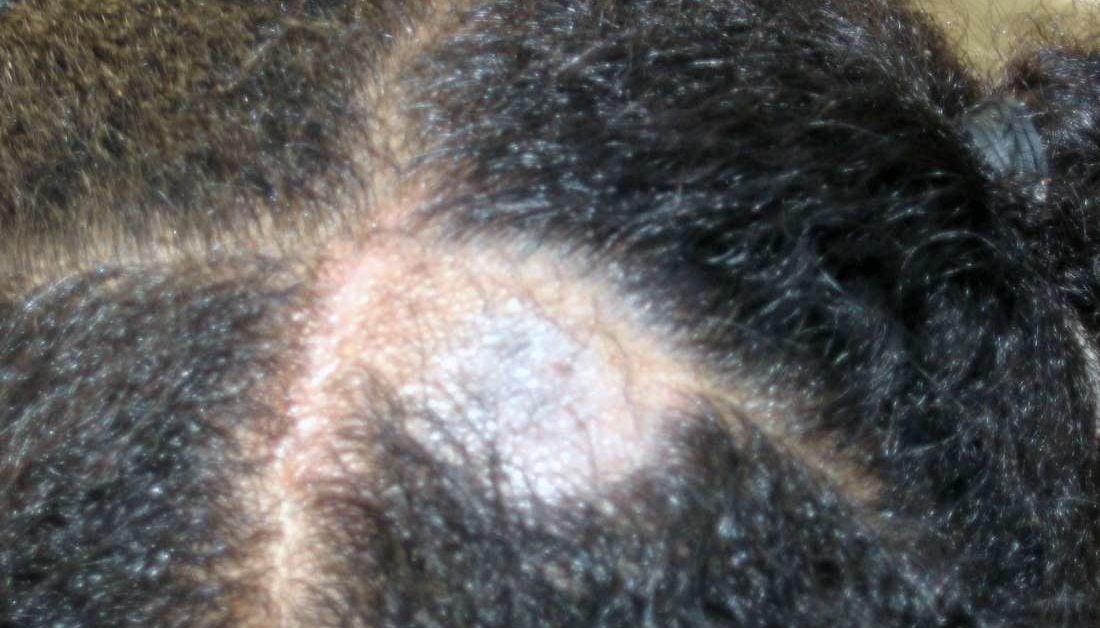Tinea capitis (scalp ringworm): Causes, symptoms, and treatments - Medical News Today

Tinea capitis is the term for a ringworm infection that develops on the skin and inside the hair follicles on the scalp.
Ringworm is a fungal infection that causes a bright red ring-shaped rash when it appears on the trunk, extremities, or face.
The areas of the body that ringworm typically affects include the:
- hands
- groin
- feet
- toenails
- trunk
In this article, we take a close look at tinea capitis, including its causes, symptoms, and treatments. We also explain how to distinguish it from similar conditions.
According to the Centers for Disease Control and Prevention (CDC), about 40 unique species of fungi can cause ringworm.
People can contract ringworm after coming into contact with infected humans or animals or with dirt or an object that contains infectious fungi.
Fungi grow well in warm, moist areas, so ringworm often develops between the toes, in the groin area, or in skin folds.
Living in a warm, moist climate may increase a person's likelihood of coming into contact with skin fungi.
Initially, tinea capitis causes small red bumps and pustules on the scalp, as well as some scaling. Over time, these bumps may increase in number. The rash can also spread to cover a wider area.
People who have tinea capitis may experience a localized area of scaling, itching, and pus filled bumps. They may also notice some hair loss.
A doctor can treat most other forms of ringworm with topical antifungal medications. However, people who have tinea capitis usually need to take prescription-strength oral antifungal medications for 1–3 months.
Ringworm infections that develop in unexposed areas of skin, such as under the fingernails or toenails, may also require oral antifungal medications.
People can help support healing and prevent reinfection by:
- Keeping the skin dry. Ringworm grows in moist conditions, so it is important to keep the affected skin dry while it heals. Dry off immediately after bathing and wear loose fitting, breathable clothes.
- Washing bedding regularly. Ringworm is highly contagious, and fungal spores can transfer onto fabrics that come into contact with the affected skin. People can speed up their recovery time and prevent reinfection by washing their sheets and pillowcases after every use.
- Replacing or disinfecting hair tools. The fungi responsible for ringworm can live for long periods, which means that people need to disinfect or replace their hairbrushes, combs, and other hairstyling tools. Doing this will reduce the risk of reinfection.
Read more about home remedies for ringworm.
Although people of any age can develop ringworm, tinea capitis usually affects children.
Adults who have weakened immune systems may also have a higher risk of infection.
Other conditions can cause symptoms similar to those of ringworm. These conditions include:
Seborrheic dermatitis
This skin condition causes red, flaky rashes in areas of the skin that contain high concentrations of sebaceous glands, such as the scalp, face, and upper back. Most people refer to it as dandruff.
Sebaceous glands sit inside the skin and secrete an oily substance called sebum, which helps lubricate the skin and hair.
Seborrheic dermatitis typically causes the affected skin to appear greasy with white or yellow flakes. It can also sometimes look inflamed with a red or pink hue.
Seborrheic dermatitis can affect people of all ages. Babies can develop seborrheic dermatitis on their scalps, which is also known as cradle cap.
According to the National Eczema Association, seborrheic dermatitis is slightly more common in males than in females.
Psoriasis
Unlike tinea capitis, which occurs as the result of a fungal infection, psoriasis is a chronic condition that causes rapid skin cell growth.
In people with psoriasis, the skin cells grow more quickly than the body can shed them, so excess skin cells collect on the surface of the skin, forming white, scaly rashes.
Psoriasis can affect any areas of the skin, but it usually occurs on the:
- scalp
- elbows
- knees
- lower back
Similar to tinea capitis, scalp psoriasis can cause red, flaky patches on the scalp. It can also lead to temporary hair loss.
While psoriatic rashes on the scalp tend to itch, people should try to avoid scratching affected areas.
Learn more about ringworm vs. psoriasis here.
Tinea capitis refers to a ringworm infection that affects the scalp. The symptoms of tinea capitis include:
- localized pustules and red papules
- focal areas of itching and scaling
- hair loss
People of any age can develop tinea capitis. However, this infection usually affects young children.
Treatments for tinea capitis include oral antifungals and medicated shampoo. People might be able to prevent reinfection by:
- keeping the affected area clean and dry
- disinfecting or replacing hair tools or other objects such as hats, that might be contacting the area
- washing bed sheets and pillowcases regularly
Other medical conditions, such as seborrheic dermatitis, psoriasis, and eczema, can cause symptoms that mimic those of tinea capitis.
Doctors can identify tinea capitis by performing a physical examination, reviewing a person's symptoms, and running a fungal culture on a sample of the affected hair.
Comments
Post a Comment